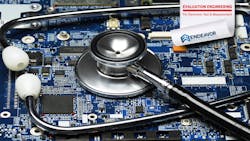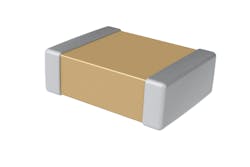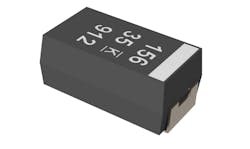Considerations on Component Selection in Medical Equipment
Reprinted with permission from Evaluation Engineering
The average human lifespan has risen steadily, as prosperity and living standards have increased in many parts of the world. Increased lifespan is a cause for celebration. However, longer lifespans bring challenges too. According to the World Health Organization, by 2050, one in six people worldwide will be aged 65 or over, almost twice the proportion in 2019.
Aging populations have greater care needs, placing increased pressure on health authorities. Medical technology has a role in overcoming these challenges, and delivering better-quality healthcare to more people, cost-effectively and efficiently.
Today’s healthcare providers have access to more powerful, more reliable, and more diverse types of tools at their disposal to help diagnose and treat patients. There are also non-invasive wearable devices such as personal monitors that can help patients measure their vital signs such as heart rate, blood pressure, and blood sugar, as well as record and report the results to care coordinators remotely. Today’s smallest medical devices include tiny implantables that can help sustain life and manage chronic conditions, such as cochlear implants for correcting hearing loss, and pacemakers to help manage heart conditions such as arrhythmia.
Demands on Electronics
Successive generations of electronic components are becoming smaller and more energy-efficient, as well as more precise and sensitive, and have been instrumental in enabling today’s advanced medical equipment to emerge and continue improving by delivering greater ease of use and enhanced capabilities.
Medical devices such as wearables and implantables are typically required to operate continuously, making low power consumption an essential requirement, as well as extremely high reliability. On the other hand, equipment such as scanners must typically handle high pulse loads, while other devices such as emergency defibrillators must sit inactive for long periods, yet be ready to start up and operate perfectly the instant they are needed.
To ensure the reliability of components such as capacitors used in filtering and decoupling circuits, ceramic capacitors (MLCCs) such as medical-grade devices are burned in at high voltage and temperature. They are subsequently inspected and tested according to the military standards MIL-PRF-55681 and MIL-PRF-123. These are the most demanding test methods in the industry and allow for an extremely high assurance of reliability (Fig. 1).
In applications that face extreme size constraints, such as in the smallest wearable and implantable devices, tantalum capacitors may be selected for their high volumetric efficiency. Next-gen technologies developed to maximize the reliability of solid tantalum and polymer-tantalum capacitors, combined with advanced screening and testing procedures, can provide extremely high assurances of performance and longevity.
A key challenge has been to prevent organic compounds used during the manufacturing process from becoming trapped in the high-purity tantalum anode material. During sintering, these trapped impurities enable defects to form in the anode and precipitate crystalline tantalum oxide that can damage the dielectric material. A unique organic lubricant and washing process ensures all impurities are removed before sintering, thereby eliminating the potential for latent defects.
Polymer-tantalum cathode technology has enabled manufacturers to produce tantalum capacitors that have lower equivalent series resistance than electrolytic tantalum types and superior surge capability that allows designers to specify smaller capacitors for extra savings in real estate. In ordinary polymer-tantalum capacitors, thermal and voltage stresses can cause the cathode film’s delamination, particularly in high-humidity environments, leading to increased resistance and device failure. The latest polymer cathode materials are more resistant to stresses and delamination, as well as less susceptible to moisture. They therefore display more consistent ESR with excellent reliability in harsh environments.
Screening and Testing
Testing for breakdown voltage (BDV) is an efficient method for screening tantalum capacitors. A low BDV indicates the presence of defects in the dielectric. However, BDV testing is destructive and can only be applied to a sample of components from any batch. Non-destructive Simulated Breakdown Screening (SBDS) allows 100% of the components to be assessed.
Before the screening, the average BDV is determined by sampling from every production lot. When screening, the capacitor is connected in series with a resistor, and a voltage equal to 1.3-1.5 times the average BDV is applied. SBDS analyzes the voltage vs. time charging curve, enabling the dielectric’s purity to be inferred without exposing the device to damaging over-stresses.
High-purity F-Tech MnO2 tantalum capacitors can be screened using SBDS to provide extremely high assurance of reliability (Fig. 2). A Surge Step Stress Test (SSST) may also be applied to a sample of capacitors as part of the manufacturing process to verify the cathode top coating’s integrity. A good top coating layer is needed to protect the dielectric against power-on stresses.
Finally, Polymer Capacitor Reliability Assessment Testing (PCRAT), a technique developed by KEMET, establishes a test specification that's better suited to polymer-tantalum capacitors than the MIL-PRF-55365 specification historically applied to MnO2 tantalum devices. PCRAT uses optimized temperature and voltage acceleration techniques to accurately predict the lifetimes of mounted parts.
Alongside ensuring reliability, minimizing power consumption is a key concern for designers of small devices such as battery-powered wearable monitors. Sealed-for-life designs are often preferred to eliminate patient intervention, for any reason, including battery replacement, to minimize the potential for measurement errors or damage to the equipment. In addition to choosing low-power components and technologies wherever possible to prolong battery life, devices used at intervals, such as blood-pressure monitors or desktop glucose meters, can be made to save power by powering down when unused.
Pyroelectric infrared sensors enable devices to wake by proximity detection as the user approaches. These sensors can be used with or without a lens, allowing flexibility to optimize the detection range. The sensor shown in Figure 3 is designed to detect human presence through a solid plastic or glass material, such as the device enclosure. The device draws extremely low operating current in the microamp range, thus contributing to low overall power consumption.
Looking Forward
Improved component manufacturing and screening processes have an essential role in providing the reliability assurances designers need to continue delivering new medical devices that help enhance and democratize healthcare.
MIL-PRF testing as applied to MLCCs and high-purity F-Tech manufacturing of tantalum capacitors, combined with SBDS and PCRAT screening, are examples that have been developed to ensure the best quality components enter the supply chain in perfect condition. Additionally, taking advantage of design tools such as KEMET’s K-SIM simulator for calculating device lifetime in the target application helps designers select the most suitable device technology, capacitance, and voltage rating to meet their requirements.
About the Author

Samuel Accardo
Samuel Accardo is a Field Application Engineer (FAE) at KEMET. The FAE position gives him the opportunity to use the knowledge and training he gained from his degrees in Electrical Engineering and Mass Communication. Prior to joining KEMET, Sam was a student at Louisiana State University and worked as a Project Manager/Developer for technology company and an Advertising Sales Manager at LSU Student Media. Sam's interest in technology comes from his desire as a child to take apart everything he owned in order to see how it worked and technology's ability to improve the quality of life.



